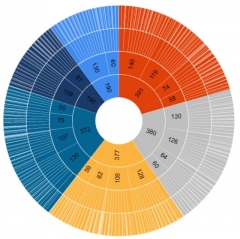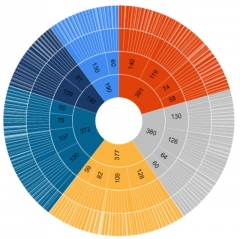Indicators
An environmental indicator is a quantitative measure that can be used to illustrate and communicate complex environmental phenomena simply, including trends and progress over time - and thus provides insight into the state of the environment. Indicators are designed to answer key policy questions and support all environmental phases of policymaking, from designing policy frameworks to setting targets, and from policy monitoring and evaluation to communicating to policy makers and the public.
One of the key objectives of the regional EU-funded project 'Towards a European Environmental Information System (SEIS) in the European Neighborhood' is to harmonize methodologies for comparable environmental production across the region. The indicators available on this website have been developed jointly by the European Environment Agency (EEA), the European Topic Centers on Inland, Coastal and Marine waters; and Biodiversity and national experts of Azerbaijan. The set of indicators is a selection from the UNECE Environmental Indicators, while the EEA indicator template and the DPSIR assessment framework have been followed for the indicators' content.

C1 – Renewable freshwater resources
Azerbaijan is heavily dependent on external inflow of water from upstream countries. On average, Azerbaijan’s dependency ratio for upstream water is greater than 70 % of its total renewable freshwater resources.
VIEW MORE
C2 – Freshwater abstraction
Azerbaijan is a water-scarce country facing water stress conditions, with a long-term average annual water exploitation index (WEI) of greater than 30.5 % (WEI = 41.2 % in 2017).
Agriculture is the highest water-demanding sector, accounting for 90 % of the total water abstraction annually.

C3 – Total water use
Annual freshwater use by economic sectors in Azerbaijan increased by 7 % between 2000 and 2017. Water use by agriculture increased by 76.5 % during the same period.
On average, about 26 % of total freshwater abstraction is lost during transport. No significant improvement was observed in the efficiency of water transport between 2000 and 2017.

C4 – Household water use per capita
A citizen of Azerbaijan used an average of 108.2 m3 of water for household uses from renewable freshwater resources in 2005 compared with 73.6 m3 in 2017.
The population connected to the water supply has increased from 41.6 % in 2005 to 51 % in 2017 while water use per capita has decreased by 31.9 % for the same period, which indicates absolute decoupling.

C5 – Water supply industry and population connected to water supply industry
In 2017, 50.9 % of the total population of Azerbaijan was connected to the public water supply, while 49.1 % of population met their water demands by self-supply.
The estimated percentage of the population connected to the water supply industry had increased by 9.3 % in 2017, compared with 2005. In absolute terms, total population connected to the public water supply network had increased by 41.6 % for the same period.

С10 - BOD and concentration of ammonium in rivers
From 2001 to 2017, there was an increase and a subsequent decrease in average biological oxygen demand (BOD) and ammonium concentration across rivers of Azerbaijan. The reasons for the increase were primarily transboundary transportation through the Kura River and fertilizers used in agriculture.
VIEW MORE
С11 - Nutrients in freshwater
Average concentrations of nitrate and phosphate in lakes/reservoirs and nitrate in rivers have decreased markedly since around 2009-2012, mainly due to installation of modern treatment facilities for waste-water and agricultural measures. The lake concentrations were still far higher at the end than at the start of the time series.
VIEW MORE




